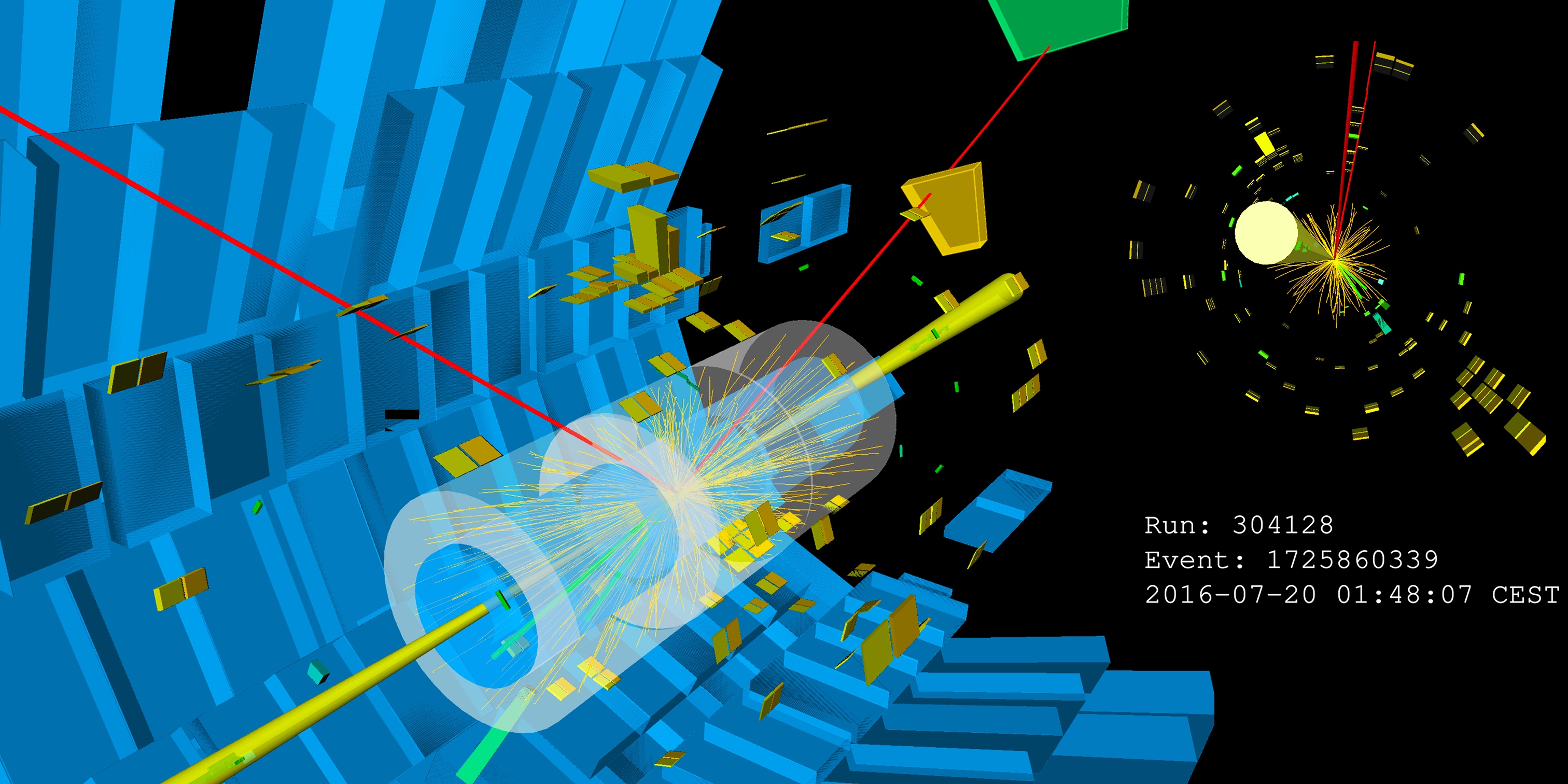Cracking open the Higgs shell: new ATLAS measurement of “off-shell” production uses AI techniques
6 November 2024 | By
In 2012, scientists from the ATLAS and CMS Collaborations detected a “bump” in their data. This peak in the mass distribution, around 125 GeV, revealed the presence of the Higgs boson. While most Higgs bosons are observed at the LHC with this “on shell” mass, about 15% of Higgs bosons have a “virtual” mass well above 125 GeV – known as the “off shell” mass. This is one of the quirks of quantum mechanics, which allows particles to fluctuate their mass for an extremely short time.
By comparing the production rates of on-shell and off-shell Higgs bosons, physicists can study key properties of the Higgs boson, such as the width of the peak in the mass distribution. This width is related to the Higgs boson’s lifetime and its decay rate to other particles. As it is predicted to be just 4 MeV – more than a hundred times smaller than the resolution of the ATLAS detector – this is the only way to set constraints on its value at the LHC. Additionally, the rate of off-shell Higgs-boson production is sensitive to potential contributions from Beyond the Standard Model (BSM) physics at high energies – making it an important tool for exploring new physics.
As off-shell production doesn’t result in the characteristic “bump” of on-shell production in the mass spectrum, it can be difficult to distinguish from background processes with identical signatures and larger rates. To overcome these challenges, the initial ATLAS measurement of the Higgs-boson width with LHC Run-2 data (collected in 2015-2018) used a machine-learned neural network to distinguish signal events from background. This approach, however, is not optimal for a measurement of off-shell Higgs production due to quantum interference between the signal and background.
While most Higgs bosons are observed at the LHC with this “on shell” mass, about 15% of Higgs bosons have a “virtual” mass well above 125 GeV – known as the “off shell” mass.

To achieve greater sensitivity, ATLAS researchers used an innovative new technique in their most recent analysis of off-shell Higgs-boson production in Run-2 data (see event display). The technique – called Neural Simulation-based Inference (NSBI) – also uses neural networks, but evaluates multiple networks for each event, where each network corresponds to a different signal, background or interference process. Researchers combined the network scores analytically into a single observable which captures the physics of the interfering signal and background, and is used in the fit to extract the off-shell Higgs-boson production rate. This new observable is shown to have an optimal sensitivity for production rates from zero to several times the Standard-Model expected rate, whereas the original approach was only optimal in close vicinity to the Standard-Model expectation.
The new results for the off-shell Higgs-boson production rate and width are consistent with the Standard Model. Figure 1 shows the new measurement in terms of a “likelihood ratio curve”, which shows the data’s compatibility with the Standard Model (where μoff-shell is the ratio of the off-shell Higgs-boson production rate relative to the Standard Model rate). The figure also compares the new result (NSBI) to the previous one. Lower values on the likelihood curve indicate better agreement between the data and the corresponding value of μoff-shell , with the minimum corresponding to the best fit result. The observed result is in agreement with the Standard-Model expectation (where μoff-shell = 1); a minimum significantly different from 1 could indicate a BSM signal. The improvement in the expected sensitivity is seen by comparing the blue curves, while the black curves show the improvement in the measurement with data. The smaller uncertainty of the new NSBI measurement is clearly visible.
The success of this result demonstrates the enormous potential of NSBI for complex analyses, particularly those dealing with quantum interference. With a novel approach to data analysis and its improved sensitivity, NSBI opens the way for researchers to exploit the full potential of LHC data.
Learn more
- Higgs2024 presentation by Jay Ajitbhai Sandesara: Measurement of off-shell Higgs boson production in the H→ZZ→4ℓ decay channel using Neural Simulation-Based Inference
- Measurement of off-shell Higgs boson production in the H→ZZ→4ℓ decay channel using a neural simulation-based inference technique with the ATLAS detector at 13 TeV (ATLAS-CONF-2024-016)
- An implementation of Neural Simulation-Based Inference for Parameter Estimation in ATLAS (ATLAS-CONF-2024-015)
- Evidence of off-shell Higgs boson production from ZZ leptonic decay channels and constraints on its total width with the ATLAS detector (Phys. Lett. B 846 (2023) 138223, arXiv:2304.01532, see figures)
- ATLAS finds evidence of off-shell Higgs boson production and measures Higgs boson’s total width, ATLAS Physics Briefing, November 2022




